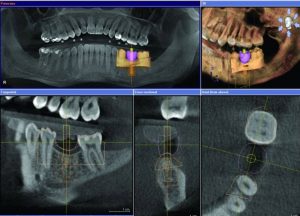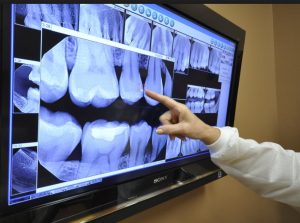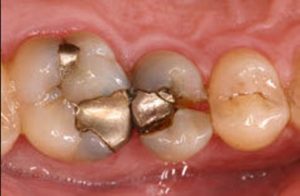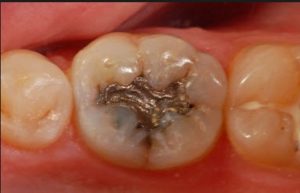Advancements in new dental technology offer better solutions for traditional oral health problems than ever before. The trend in dentistry is utilizing technology to make dentistry more comfortable, durable, efficient and natural-looking for our patients Our patients benefit from newer techniques that are less invasive and more dependable than the years of past. Procedures that formerly took multiple trips to the dentist or required multiple health care providers can often be performed in the comfort of one office by one qualified provider.
There are many new advancements in dentistry that we have integrated into our State of the Art Facility.
Placing Implants With Precision
Dr. Rader wants to know precisely where to place your dental implant. Not 99 percent sure, but completely positive that the angle, rotation, depth, width and height of both the implant and the color-matched restoration will fit so well within your mouth it will be indistinguishable from the rest of your teeth. By utilizing the most sophisticated technology in dental imaging (3D Cone Beam CT), Dr. Rader is able to diagnose the exact location of vital anatomical structures (i.e. nerves, sinuses) and the amount of bone in all dimensions and it’s density to determine the precise positioning of your dental implant for both aesthetics and function.
Besides the benefit of reducing exposure to radiation, digital radiographs allow images to be projected on a computer screen. This modern dental technique is also more comfortable and allows us to find problems with the teeth, mouth, and jaw.
For the diagnosis of malocclusion and TMJ, we use the Myotronics K7 system and a TENSing Unit. The K7 evaluation system lets us measure, display and store all the pertinent data on your jaw’s physiological and anatomical function. K7 utilizes electromyography and joint sonography to gently track the position of your jaw and surrounding muscles, determining the most comfortable, functional and optimal position for your bite. In other words, “form follows function.” We don’t guess where your bite should be when we restore your teeth; we know! .
Intraoral cameras provide dentists with quality imaging equipment that can be used for patient education, higher case acceptance, and improved patient communication. The small lightweight cameras are used in the patient’s mouth to provide clear images of one’s mouth and can help in the detection and prevention of oral health problems.
We utilize digital photography for our patients so that they can provide them with an idea of what they will look like after a complex dental procedure such as a smile makeover or full mouth reconstruction. This is appealing to patients because they can communicate to us the cosmetic concerns and inform us of what they want to look like and what their expectations are.




